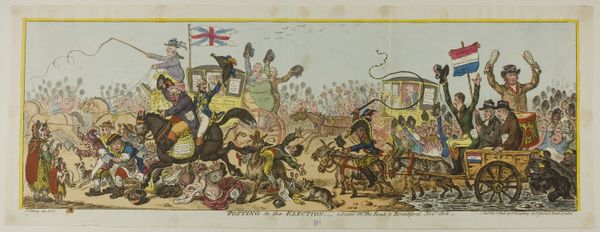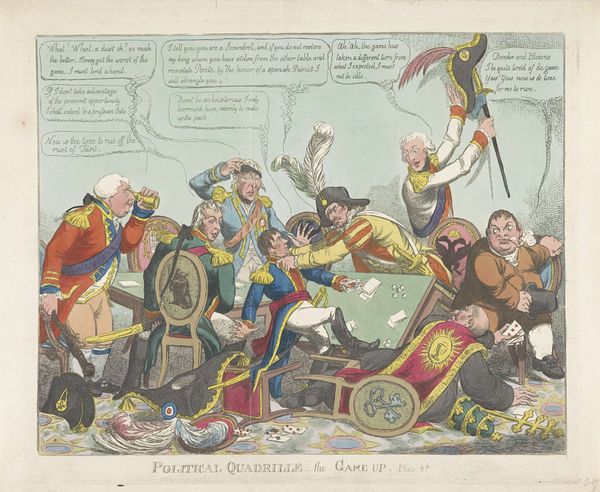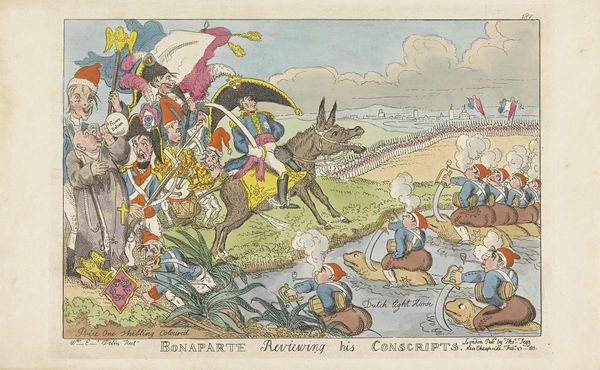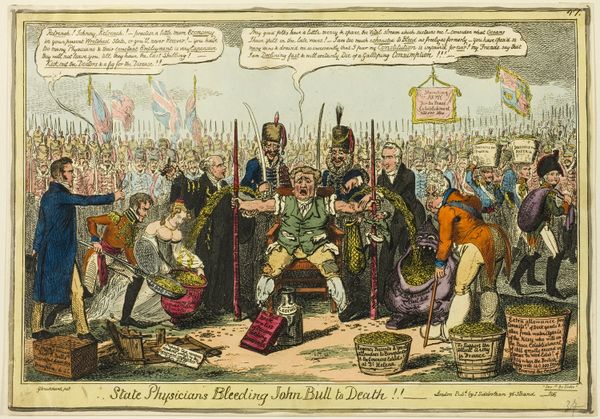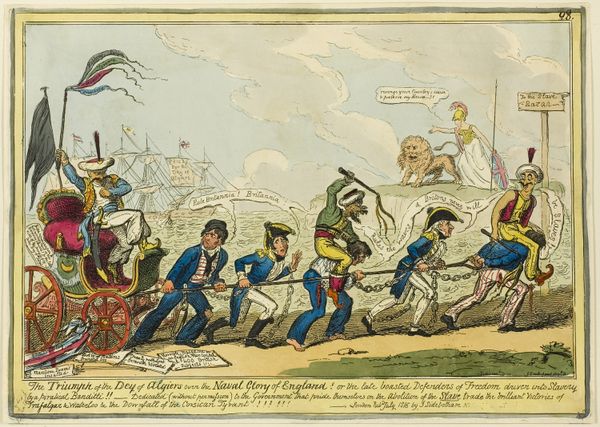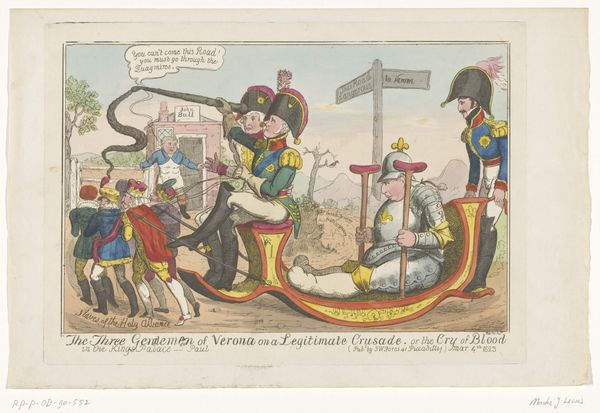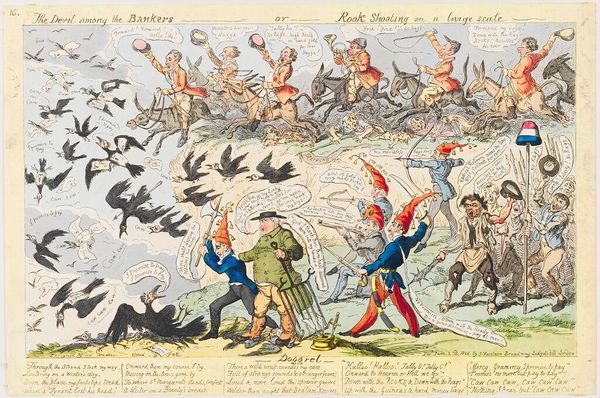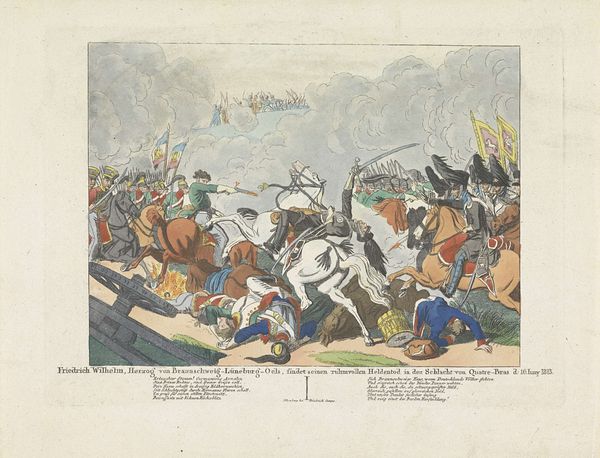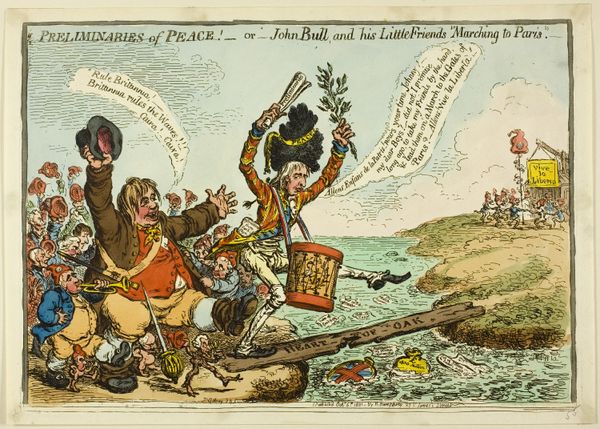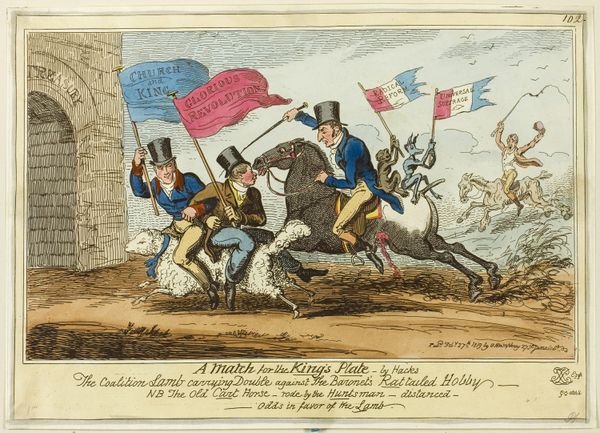
drawing, graphic-art, print, etching
#
drawing
#
graphic-art
# print
#
etching
#
caricature
#
romanticism
#
history-painting
Dimensions: 231 × 407 mm (image); 238 × 414 mm (plate); 241 × 417 mm (sheet)
Copyright: Public Domain
Curator: Ah, yes, "Return of the Paris Diligence," etched by George Cruikshank around 1815. What strikes you first about it? Editor: What strikes me immediately is how intensely *crafted* it is, look at the detail in those tiny figures! Beyond that, it's gruesome. Comical, perhaps, but really gruesome. A brutal procession crushing bodies. Curator: Exactly. There's this strange blend of Romantic flair, all those billowing flags and heroic figures, with what’s ultimately a commentary on violence and perhaps the chaotic nature of historical narrative. Editor: Note how Cruikshank uses etching to capture this controlled frenzy of movement. This etching likely served a political purpose beyond simple storytelling – how was this artwork marketed? Who consumed it, and what impact did it seek to have? Curator: That's precisely the genius! His satirical lens offered a way for the British public to process these historical shifts. The abundance of bodies being flattened under the wheels of the 'Paris Diligence', the very materiality speaks volumes of this moment. Editor: Tell me about the diligence. It looks less like a refined method of transport and more like a theatre. Are the materials used significant – is the dilution of this narrative a result of cheap or hasty construction? The visual cacophony might mirror the rapid spread of rumors and propaganda during this period. Curator: Absolutely, and Cruikshank wielded his materials - copper plate, acid, paper, ink - with this cutting precision. It’s a masterclass in visual storytelling with potent implications! Editor: The print medium would've enabled wider dissemination; and thus its purpose fulfilled with relatively accessible resources and, frankly, horrifying speed. That says so much about its moment. Curator: Considering this artwork, I feel deeply how art shapes perceptions of history, isn't it amazing? Editor: I'd say, seeing this work laid before us now it gives new meaning to our perception of conflict, or the aftermath of any conflict. It brings me to think about the production and process behind creating our perceptions, how history remembers or maybe fails to recall past atrocities.
Comments
No comments
Be the first to comment and join the conversation on the ultimate creative platform.
